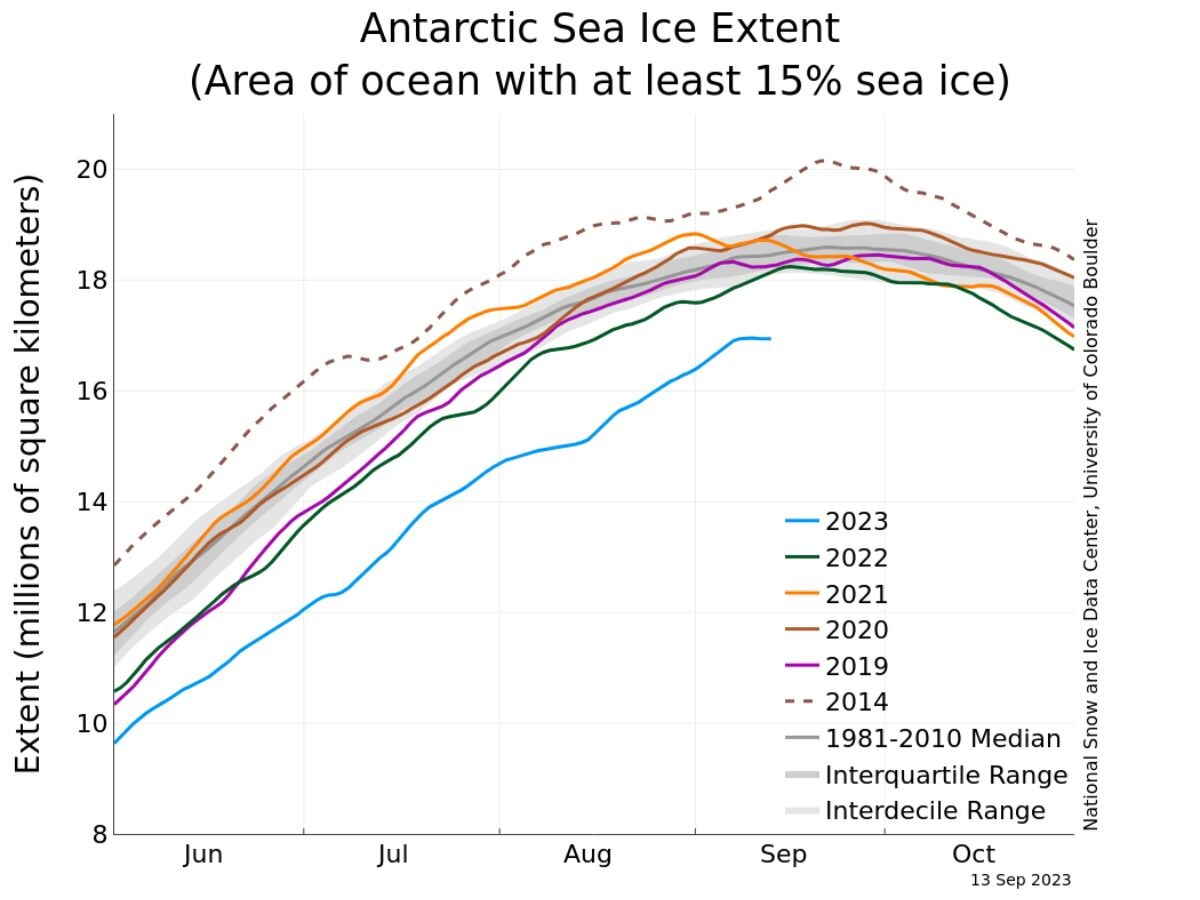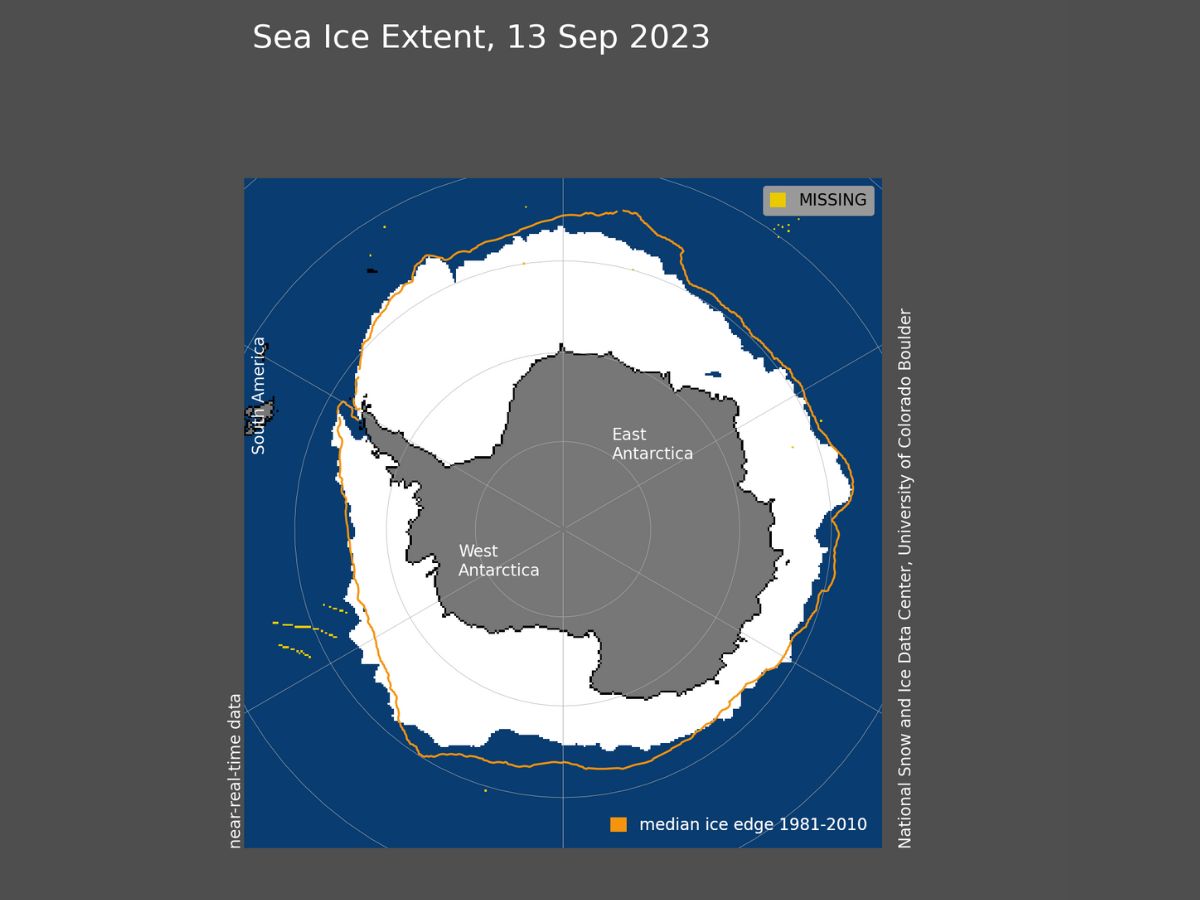Antarctic Sea Ice Extent Over 1 Million Square Km Below Previous Record Low Maximum Of 1968: US Analysis
As of September 13, 2023, the Antarctic sea ice extent is over a million square kilometres below the previous record low maximum set in 1968, according to the National Snow & Ice Data Center.

The Antarctic sea ice extent has reached record low levels. As of September 13, 2023, the Antarctic sea ice extent is over a million square kilometres below the previous record low maximum set in 1968, according to the National Snow & Ice Data Center. This is surprising because it is currently winter in Antarctica, which is located in the Southern Hemisphere. This is a time when the sea ice cover grows.
During the first eight days of September 2023, Antarctic sea ice grew at a much faster-than-average pace. It increased at a rate of 65,000 square kilometres per day. The 1981 to 2010 average rate of increase of Antarctic sea ice extent was 25,000 square kilometres per day.
Much of the growth in the sea ice extent that occurred during the first eight days of September this year happened in the northeastern Ross Sea, and along the Weddell Sea ice front. But the expansion of the sea ice extent slowed after September 8.
MUST READ | Science For Everyone: What Are UFOs? Know Interesting Anecdotes, And How NASA Aims To Track Them
According to the NSIDC, since no further growth occurred, the Antarctic sea ice extent is less than 17 million square kilometres for the first time in the satellite record. It was 16.94 million square kilometres on September 13, 2023.

The area of ice currently floating on the surface of the Antarctic Ocean is 1.5 million square kilometres less than the September average. This is equivalent to five times the size of the British Isles, according to a BBC report.
The years 1986, 2002, 2017, 1989 and 2022 saw the five low maximum sea ice extents before this year's record low sea ice extent.

There was a strong high-pressure area over the Peninsula region in Antarctica, from September 1 to 11, 2023. It was due to counterclockwise airflow that sea ice was pushed outward along the northwestern Weddell Sea. There were low air pressure conditions and below average temperatures in the central and western Ross Sea.
Related Video
Southern Rising Summit 2024: How Important is Self-Awareness? Insights from Anu Aacharya | ABP LIVE




































